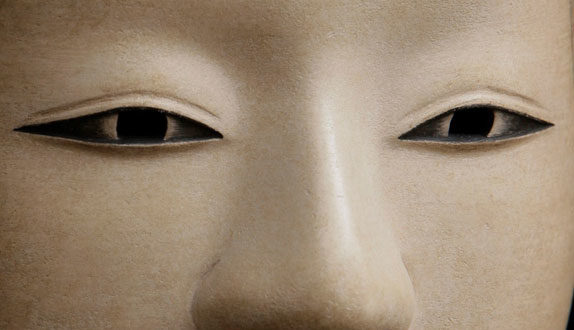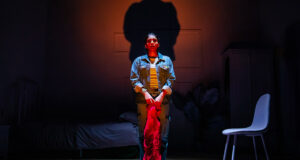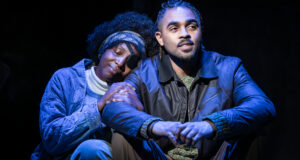Pros: A rare opportunity to appreciate a form of theatre which has been performed without interruption since the 14th century.
Cons: As with anything out of the ordinary, this show can be quite challenging to follow, due to the lack of clear narrative elements.
Summary
Rating
Excellent
Watch it with an open mind and you'll discover a fascinating fusion between Eastern and Western performing arts.
If you’re not already intrigued by this description, then try to imagine the whole combined with a variety of Western specialities like opera, ballet and poetry. The outcome is an unprecedented layering of tradition and innovation, originally conceived as a tribute to the Noh genius Akira Matsui. Trained as an actor from the age of seven, Matsui is internationally recognised for his contribution to the understanding and diffusion of this discipline across the world and is regarded as one of the best Noh performers of all time.
First of the four pieces presented at LSO St Luke’s was Rockaby, a dramatic piece by Samuel Beckett. This, read by actor Hugh Quarshie, describes the death of an elderly lady and Mr Matsui’s hypnotic enactment on stage gave the words a heavy emotional charge. His repetitive and formulaic movements worked incredibly well as a visual counterpart for Beckett’s obsessive and almost paranoid lines of loneliness and despair.
There followed Noh Hayashi, an extract of traditional music sung by Eitaro Okura, Kayu Omura and Richard Emmert, accompanied by a flute, an Otsuzumi and a Kotsuzumi – both hour-glass wooden drums of different sizes.
In Noh Meets Bach, the Unaccompanied Cello Suite No 1, played by Lucia Capellaro, became an unusually rich soundtrack for classical Noh lyrics. The cello’s grave notes echoed Mr Matsui words and highlighted their intensity, whilst confirming the universality of music, with its ability to provoke emotions and transmit meanings, despite the use of an unfamiliar language.
Opposites-InVerse concluded an unforgettable evening of fusion between Eastern and Western performing arts. In this final part, Akira Matsui’s purely stylistic routines intertwined with Peter Leung’s contemporary ballet choreography and used a base of modern Noh composition by Richard Emmert, sung in English by opera baritone Piran Legg and countertenor Meili Li. The lyrics insisted, with a circular pattern, on the attraction and clash of opposite elements, like space and time, yin and yang, night and day, tradition and innovation.
Noh Time Like The Present might not be everyone’s cup of tea, particularly because of the lack of an explicit narrative plot and familiar visual references. Ultimately, however, it is a brilliant opportunity to witness the powerful structure of Noh and its long-lasting history. As a true theatre-lover, I felt privileged to live in a city that has such a varied and valuable cultural offering. If, in the future, you get the opportunity, go and see this fascinating performance with an open mind and be ready to discover, as I did, where the apparently antipodal performing traditions of East and West find their meeting point.
Rockaby Writer: Samuel Beckett
Noh Meets Bach Composer: Johann Sebastian Bach
Opposites-InVerse Writer: Jannette Cheong
Opposites-InVerse Composer and Director: Richard Emmert
Opposites-InVerse Choreographers: Akira Matsui and Peter Leung
Booking Information: This show has now completed its run
 Everything Theatre Reviews, interviews and news for theatre lovers, London and beyond
Everything Theatre Reviews, interviews and news for theatre lovers, London and beyond



